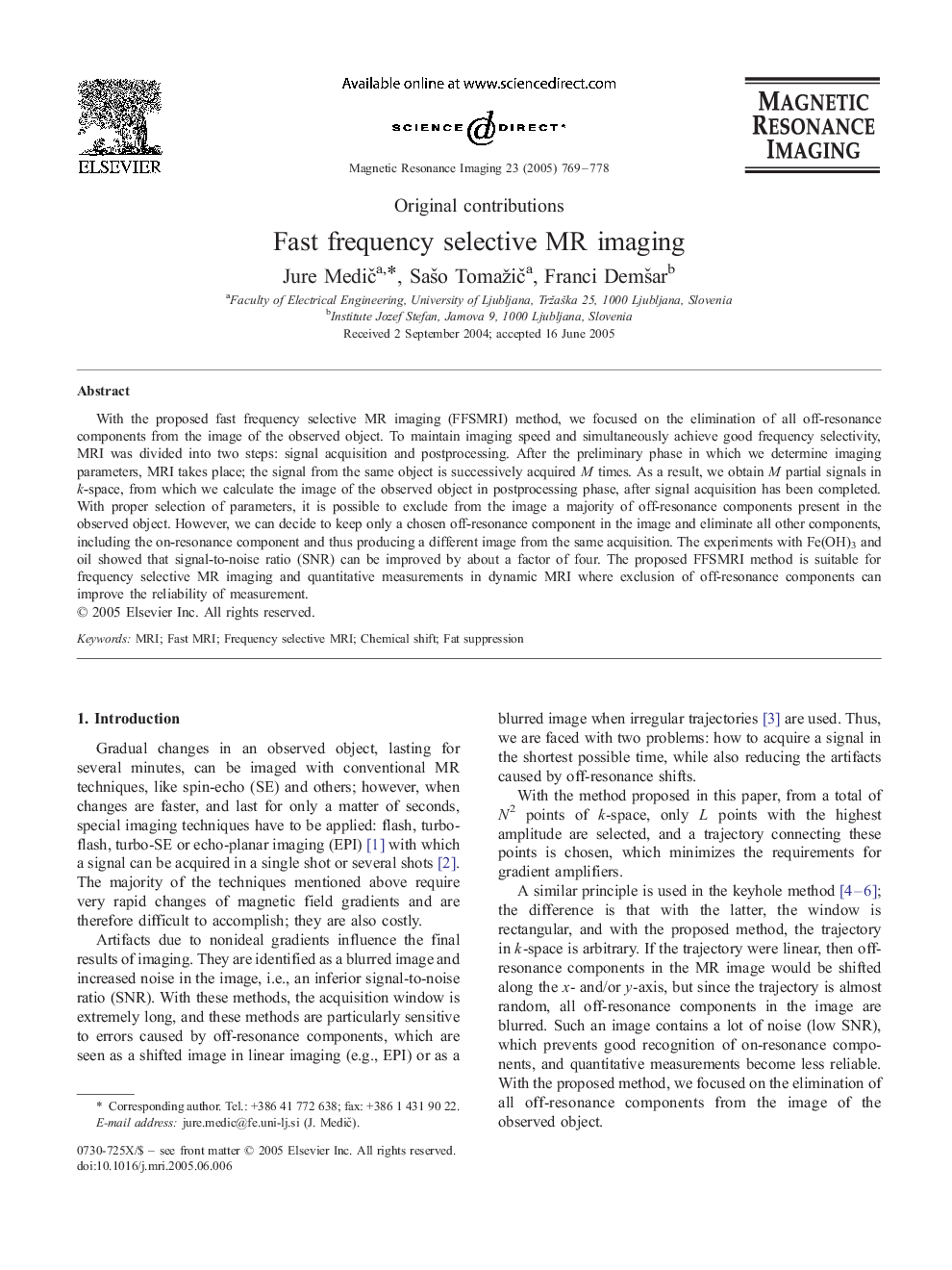| Article ID | Journal | Published Year | Pages | File Type |
|---|---|---|---|---|
| 10712805 | Magnetic Resonance Imaging | 2005 | 10 Pages |
Abstract
With the proposed fast frequency selective MR imaging (FFSMRI) method, we focused on the elimination of all off-resonance components from the image of the observed object. To maintain imaging speed and simultaneously achieve good frequency selectivity, MRI was divided into two steps: signal acquisition and postprocessing. After the preliminary phase in which we determine imaging parameters, MRI takes place; the signal from the same object is successively acquired M times. As a result, we obtain M partial signals in k-space, from which we calculate the image of the observed object in postprocessing phase, after signal acquisition has been completed. With proper selection of parameters, it is possible to exclude from the image a majority of off-resonance components present in the observed object. However, we can decide to keep only a chosen off-resonance component in the image and eliminate all other components, including the on-resonance component and thus producing a different image from the same acquisition. The experiments with Fe(OH)3 and oil showed that signal-to-noise ratio (SNR) can be improved by about a factor of four. The proposed FFSMRI method is suitable for frequency selective MR imaging and quantitative measurements in dynamic MRI where exclusion of off-resonance components can improve the reliability of measurement.
Related Topics
Physical Sciences and Engineering
Physics and Astronomy
Condensed Matter Physics
Authors
Jure MediÄ, SaÅ¡o TomažiÄ, Franci DemÅ¡ar,
